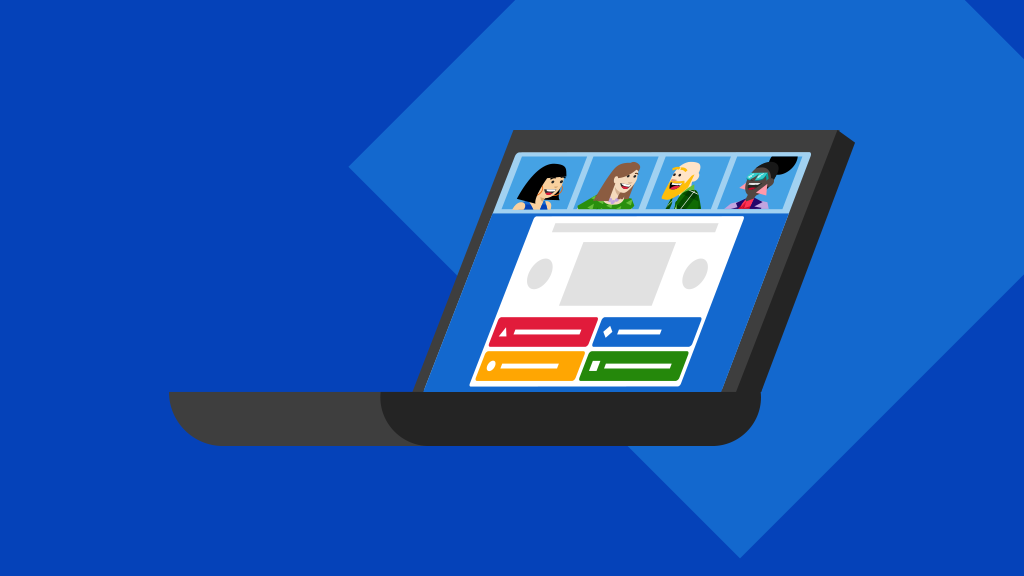In our seventh meeting of the Instructional Innovation Fellowship (IIF) on a bright and sunny Wednesday morning on April 26, three fellows presented their innovative tech tools and teaching ideas. Li Hou presented on using Kahoot and Quizlet for language learning, Brokk Toggerson demonstrated the use of analog tools in teaching, and Susan Boyer shared her experience using the LMS Canvas for her classes. The mix of digital and analog tools made the session particularly special, highlighting the wide range of tools available to engage students in learning.
- Kahoot and Quizlet facilitate fun language learning through gamification.
- Analog tools promote high participation in large classrooms.
- LMS Canvas offers a better course management system.
Fun Language Learning with Kahoot and Quizlet
Gamification has long been recognized as an effective approach to engaging students, and technology has amplified its potential by enabling real-time collaboration among students. During the IIF meeting, Li Hou shared how she uses two popular virtual game tools, Kahoot and Quizlet, in her language classrooms. She found that using these tools makes her classroom more exciting and engaging for students, providing them with a fun and interactive way to learn.
Li Hou demonstrated how to use Kahoot and Quizlet, from signing up to quiz creation, and highlighted that both tools provide numerous templates for teachers to use and customize, making the process more efficient. Although these tools require payment to access their premium features, the free versions offer sufficient features for basic use and can still provide a wide range of benefits for engaging students. Students can access the tools from the web or app, and teachers can generate activity reports for their records.
Fellows enjoyed the presentation and suggested that students could create content for collaborative learning. Some fellows recommended similar tools like Gimkit, Google Forms, and Socrative.
Engaging Large Classrooms with Analog Tools
Brokk presented an innovative idea for engaging students in large classrooms using analog tools such as mini boards, markers, voting papers, and erasers as an alternative to digital iClickers. While iClickers are a great classroom response tool, there is no way to immediately see individual students’ participation in quizzes or polling during class. With analog tools, students raise their hands to participate, allowing him to notice those who do not and therefore engage everyone.
Brokk highlighted some benefits of analog tools over digital ones, including clearer expectations, often higher participation, and greater reliability. Such tools provide a tangible way of interacting with information, making it easier for students to understand instructions and tasks. According to Brokk’s experience, analogue tools often lead to higher participation since students show their contribution live in class, which is not always the case with digital tools. Analog tools are also more reliable, as they do not rely on the internet or electricity and do not run out of batteries or break easily.

In his physics classroom, Brokk demonstrated that he begins with a multiple-choice question displayed on a screen. Students vote using an analog paper card containing the letters A, B, C, D, and E. They fold the paper and show the letter that represents their answer.For open-ended questions, Brokk uses mini hand-held whiteboards where students can write or draw their answers. After analogue cards voting or whiteboard responses are ready, Brokk asks students to discuss their answers with a peer for about 30 seconds. Brokk then reveals the answer and asks students to discuss their answers again based on the new information from the instructor.
Brokk’s presentation demonstrated that analog tools could be a valuable alternative to digital tools, particularly in large classrooms. Using tangible materials provides a fun and interactive way for students to participate and engage with the material.
Effective Course Management System with LMS Canvas

Susan Boyer, an instructor from the Isenberg School of Management, shared her experience of using Canvas in her course. As UMass Amherst plans to migrate to a single Learning Management System from Moodle and Blackboard to Canvas, instructors may be concerned about this transition. However, Susan, who has been participating in the Canvas Pilot, has found Canvas more comprehensive than Moodle and Blackboard, offering helpful features and a user-friendly interface. In a candid presentation, Susan highlighted Canvas’s two most helpful features for her teaching and challenges.
Among the most helpful features, Susan found Canvas Calendar to be very useful for noting course dates, such as deadlines and meetings for all courses in one place, which was absent from Moodle and Blackboard. She has also found the Canvas grading system (Gradebook) effective and efficient. For example, she can grade students based on specific assignments or assignment types and create feedback templates that can be used across students.
Meanwhile, Susan shared that the discussion feature is what she has found different and somewhat challenging in Canvas. She shared that the discussion feature can be challenging to navigate in large classes with many contributions, as it can have multiple pages, making it difficult to find specific information in long threads. However, she has implemented a workaround by specifically tagging and explicitly naming discussion topics.
Despite the challenges, Susan emphasized that Canvas offers more customization opportunities for instructors to design their courses. She found Canvas a more comprehensive platform with helpful features and a user-friendly interface.
The IIF meeting was engaging and fruitful, providing valuable insights into innovative tools and strategies for enhancing the learning experience. The upcoming final meeting in May will conclude the first cohort of IIF, and the second cohort is now open for applications.


